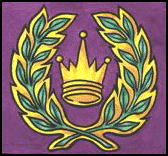Richard's Sir William Paston's Meathe
From EastKingdomWiki
| Full Recipe Name | ||||||
|---|---|---|---|---|---|---|
| Sir William Paston's Meathe | ||||||
| Recipe Source | ||||||
| The Closet of Sir Kenelm Digby Knight Opened, By Kenelm Digby | ||||||
| Brewer | ||||||
| Richard Heyworth | ||||||
| Panel Information | ||||||
| ||||||
| Beverage Information | ||||||
|
Brewing Details
- Brewer: Richard Heyworth
- Recipe Source: The Closet of Sir Kenelm Digby Knight
Original Recipe
Take ten Gallons of Spring-water, and put therein ten Pints of the best honey. Let this boil half an hour, and scum it very well; then put in one handful of Rosemary, and as much of Bay-leaves; with a little Limon-peel. Boil this half an hour longer, then take it off the fire, and put it into a clean Tub; and when it is cool, work it up with yest, as you do Beer. When it is wrought, put it into your vessel, and stop it very close. Within three days you may Bottle it, and in ten days after it will be fit to drink.
Redaction
Take ten gallons of water and add ten pints of honey. Boil for half an hour, removing any scum that comes to the surface, then put in one handful of rosemary, a handful of bay leaves, and a little lemon peel. Boil for another half an hour, then remove from the heat and place in a vessel to cool. Once cool, add yeast. After three days, place into bottles, then drink after ten more.
Ingredients
- 1 gallon water (from the tap)
- 1 lb Glorybee White Clover Honey
- 2.5 tsp Rosemary (dried, from the grocery)
- 2.5 tsp Bay Leaves (dried, from the grocery)
- Lemon Peel (from the grocery)
- 1 pkg Nottingham Ale Yeast
The historical reference to a “handful” of spices likely means they were to be used fresh, but what I had on hand was dried, so I used a reference I found online that suggested that 24 tsp of dried herbs could be considered “a handful” of fresh. Obviously, this is an experiment to see if the spices are too strong.
Process and Notes
I started with a gallon of water from the tap. A pint is a pound of honey, so I added in a pound of honey and then boiled a half hour in a modern metal pot on my electric stovetop. I then added the spices and continued to boil. After boiling for another half hour, I placed it into a ceramic primary fermenter to cool, then put Nottingham Ale yeast in (after hydrating as per yeast instructions). Wellcome Mead suggests that the cooking process was typically done in metal at this time and fermentation in either ceramic or wood, so using a metal pot for boiling and a ceramic for primary fermentation made sense to me. Wellcome Mead also suggests that the modern glass wine bottle was invented in 1630 by Sir Kenhelm Digby, the author of the source for this mead, so it is likely that he would have bottled in his own glass bottles - for this reason, I felt the glass carboy and glass bottles I now use would be appropriate. I used a period wooden spoon for all stirring and scumming.
Finally, an illustration from 1660 in Wellcome Mead shows an image of an innkeeper covered in wine bottles and grapes. The shape of the glass in his hand suggests a glass goblet would be appropriate for the time period of this mead recipe.
I felt that, if I bottled after three days, I’d be getting bottle bombs, so instead, I racked it into a glass carboy at that point, then into glass bottles ten days later.
- Brewed: March 28
- Bottled: April 12
References
- Digby, Kenelm, 1669. The Closet of Sir Kenelm Digby Knight Opened by Kenelm Digby, Project Gutenberg, accessed online at: http://www.gutenberg.org/files/16441/16441-h/16441-h.htm
- Angotti, Laura, 2019.Wellcome Mead. Mt. Golbia Miscellany Publishing.
- Traditional Oven: Converting Handfuls to Teaspoons, accessed online at https://www.traditionaloven.com/culinary-arts/special-volume/convert-handful-measure-to-teaspoon-measure.html
Panel Results
- Documentation: 13/15
- Authenticity: 12.3/15
- Complexity: 10/15
- Aesthetics: 8/10
- Workmanship: 24.3/30
- Final Score: 74.7/100
